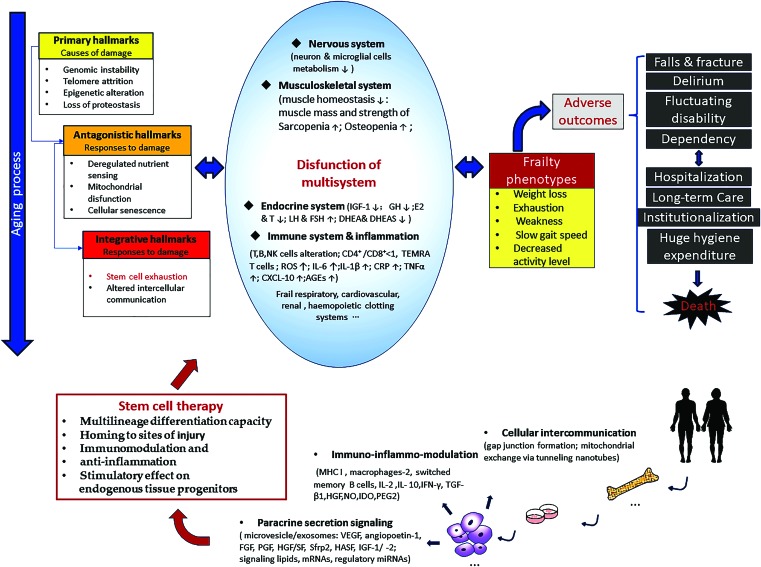FIG. 3.
Main relationships among aging frailty and stem cell therapy. This figure illustrates the underlying mechanism, main clinical phenotypes and adverse outcomes of frailty which intertwined with biological aging, and the appealing potentials of stem cells to treating frailty. AGEs, advanced glycation end products; CRP, C-reactive peptide; CXCL-10, CXC chemokine ligand-10; DHEA & DHEAS, dehydroepiandrosterone and DHEA sulfate; E2 & T, estradiol and testosterone; FGF, fibroblast growth factor; GH, growth hormone; HASF, hypoxic-induced Akt-regulated stem cell factor; HGF, hepatocyte growth factor; HGF/SF, hepatocyte growth factor/scatter factor; IDO, indoleamine 2,3-dioxygenase; IFN-γ, interferon-gamma; IGF-1, insulin-like growth factor-1; IGF-1/-2, insulin-like growth factor-1/-2; IL-6, interleukin 6; IL-1β, interleukin beta-1; IL-2, interleukin-2; IL-10, interleukin-10; LH & FSH, luteinizing hormone and follicle stimulating hormone; MHC I, major histocompatibility complex class I; NK cells, natural killer cells; NO, nitric oxide; PEG2, prostaglandin E2; PGF, placental growth factor; ROS, reactive oxygen species; Sfrp2, secreted frizzled-related protein 2; TEMRA T cells, antigen experienced CD8+ T cells re-expressing the naive marker CD45RA; TGF-β1, transforming growth factor-beta1; VEGF, vascular endothelial growth factor. It is based on the literature of López-Otín et al.; Clegg et al.; Fried et al.; Schulman et al.; Tompkins et al.; Larrick et al.2,3,14,16,19,28 Color images are available online.

